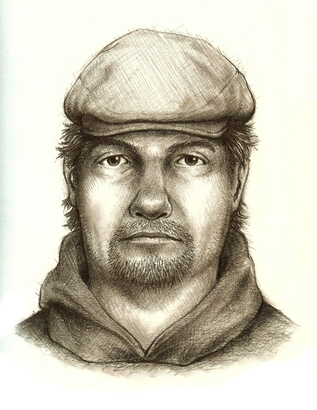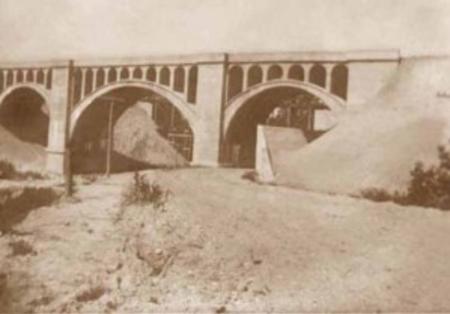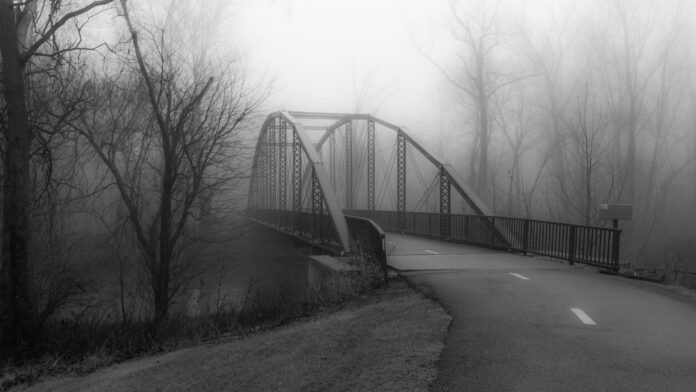You know how some stories just stay with you? The ones that haunt you—not with ghosts or anything supernatural, but with real-life pain, confusion, and the aching weight of unanswered questions. That’s the Delphi murders for a lot of people.
It started like any other day.
It was February 13, 2017, in Delphi, Indiana. A tiny town, the kind of place where people still wave from their porches and everyone knows who lives three doors down. It was a Monday, but school was out, so 13-year-old Abigail “Abby” Williams and 14-year-old Liberty “Libby” German decided to take advantage of the free time and go hiking on the Monon High Bridge trail. A bit of fresh air, a little adventure—just two friends enjoying a day off.
They never came home.
Their families got worried when the girls didn’t show up to be picked up. Calls went unanswered. Texts weren’t read. Panic started creeping in as daylight faded, and by evening, people were out searching. Flashlights in hand, voices calling into the cold woods.

The next day, Valentine’s Day, their bodies were found in a wooded area not far from the bridge. What should have been a day filled with candy hearts and notes of affection turned into one of the darkest in Delphi’s history. Two young lives, full of promise, stolen. No warning. No reason.
And the thing is, they weren’t just names in a headline. Libby loved to bake and was smart and funny. Abby was artistic and loved photography. They had dreams, quirks, laughs they shared with their friends. They were kids.
But what truly separates this tragedy from so many others is what happened next—or rather, what didn’t happen.
The Evidence on Delphi Murders That Should’ve Broken the Case
Here’s where it gets eerie.
Libby, quick-thinking and probably sensing something was wrong, had the presence of mind to pull out her phone. She recorded a man approaching them on the bridge. There’s a short clip, and it’s chilling: a man in a blue jacket and jeans walking toward the girls. From the phone’s audio, investigators shared just a few words from the man:
“Guys… down the hill.”
That’s it. No screaming. No explanation. Just those four words and a low-quality image of a man that, somehow, still hasn’t been definitively identified.
Let that sink in for a second. A teenage girl managed to record the man who would ultimately end her life. His voice. His clothes. His direction. And still, years went by—without an arrest.
The public reaction was a mix of heartbreak, frustration, and confusion. Tips flooded in—over 50,000 of them. Billboards went up. News stories ran across the country. Everyone seemed to have a theory. But the killer remained a ghost.
The Delphi Murders Sketches and the Confusion
Then came the sketches.
At first, police released a composite sketch based on eyewitness descriptions. He looked older, with a goatee and a kind of rugged look—someone in his 40s or 50s.

But in 2019—two years after the murders—they dropped a bombshell: a completely new sketch. This time, the suspect looked younger, clean-shaven, maybe in his 20s or 30s. It didn’t even seem like the same person.
Naturally, the public was baffled. What happened to the first guy? Why the change? Were they chasing the wrong lead all along?
The police remained tight-lipped, only saying that the new sketch was based on “a witness’s recollection” and was now the primary direction of the investigation. They also released more of the audio—still just a few more seconds of the man’s voice—and a brief video clip of him walking.
That video… It’s shaky, just a man walking, but when you realize it’s likely moments before he confronted Abby and Libby, it’s deeply unsettling. It’s not something you can watch without your stomach turning.
The Long Silence and Endless Speculation
For years, it felt like nothing was happening publicly. Behind the scenes, investigators said they were working day and night. But for the families and the town of Delphi, every day without answers was another wound.
The community tried to keep the girls’ memory alive. There were vigils, fundraisers, memorials. The trail near the bridge became hallowed ground. Still, no arrests. No charges. Just that blurry image, that haunting voice, and that gnawing question: Who could do something like this?
Online sleuths and armchair detectives took to Reddit, YouTube, Facebook groups—anywhere they could piece together information. Some got obsessed. Others, reckless. Names were thrown around. Innocent people were harassed.
Meanwhile, the families of Abby and Libby just kept pushing. They wanted justice. They wanted peace. And they wanted people to remember their girls—not just as victims, but as vibrant, loved, real human beings.
A Break in the Delphi Murders Case: Richard Allen
Then, in October 2022—more than five years after the murders—authorities announced an arrest. The name? Richard Allen.
He was a 50-year-old man who lived right in Delphi. Not just nearby. In town. For all those years, he’d been right there. He even worked at the local CVS. Some people in town recognized him, even vaguely knew him.
The arrest shocked everyone. Some felt relief. Others felt betrayed—how could someone from within the community have done this?
Court documents were finally released, giving us a glimpse into why Allen had become a suspect. He had apparently admitted to being on the trail that day. A bullet found near the crime scene matched a gun he owned. And then there was his own confession—or at least, what police claim is a partial admission.
But it hasn’t been cut and dry.

Allen’s defense team claims he’s being set up. They say he never confessed, and they’re raising serious questions about the evidence. Meanwhile, prosecutors are being extremely cautious, playing their cards close to the vest.
And then, in a truly bizarre twist, Allen’s lawyers filed documents suggesting a possible ritualistic or cult-related motive—though many people, including experts, have dismissed that theory as fringe speculation.
The Trial and the Wait for Delphi Murders Truth
As of now, the case is moving toward trial. Legal teams are battling over evidence, strategy, and what can be shared with the public. The families are still waiting, still hoping.
It’s hard to overstate how much this case has weighed on Delphi. In a town of just a few thousand people, something like this doesn’t just “happen.” It shatters everything you think you know about safety, about trust, about your neighbors.
And it’s not just the town. The whole country has been gripped by this case, in part because of that haunting audio, that blurry image, and the terrifying thought: he was caught on camera, and still, it took years to find him.
The Delphi murders became a symbol of a mystery that shouldn’t be a mystery. Of grief that doesn’t fade. Of justice that, for too long, felt just out of reach.
Why It Still Hurts in Delphi Murders Case
It’s not just because it was two young girls. It’s because it could have been anyone’s daughters. It was a hike. On a trail. In the middle of the day. They weren’t sneaking out. They weren’t doing anything risky. They were just being kids.
And Libby had the instinct to record—to try and help, even as danger closed in. That phone was a lifeline. It gave investigators something. But for years, it still wasn’t enough.
So, the story of Abby and Libby is one of tragedy, yes. But also of strength. Of a community that refused to forget. Of families that refused to give up. And of a generation of people—some who never even knew the girls—who said, “We care.”
We still don’t know everything. And we won’t, until the trial plays out, until evidence is shown, until all the facts come to light.
But we know this: Abby and Libby deserved so much more. And their memory deserves justice.
If you’re reading this, and you’ve followed this case, or even if this is the first time you’re hearing about it—remember their names. Abigail Williams. Liberty German. Remember the light they brought to their families and friends. And remember the determination it takes to keep pushing for truth, even when the answers don’t come easy.
Because justice might be slow. But it matters. And so do they.



